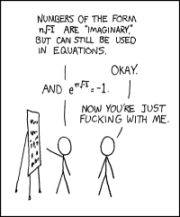One afternoon this past summer I was in my office when the phone rang. It was Andrea. “There are bees in our house,” she told me.
“What?” I thoughtfully probed.
“There are thirty or forty honeybees flying around in the living room. Some of them are starting to die, they’re lying on the floor.”
“Did one of us leave a window open this morning?”
“Nope.”
“Then where did they come from?”
“I have no idea.”
 Thus began the Night of a Million Bees. Actually it was only thirty or forty, but to me it seemed like a million. You see, even though as a scientist I like and admire bees, and can even enjoy watching their industrious activities from a safe remove, in person I’m terrified of them. My parents used to make fun of the way I skedaddled out of the way whenever I saw one as a kid; they called it “The Glickstein Shuffle.” In summer camp I was always relegated to right field when we played softball, where the clover was dense and the honeybees were busy. Many were the times when a fly ball would land just a few steps from me while I was preoccupied with staying out of the bees’ way.
Thus began the Night of a Million Bees. Actually it was only thirty or forty, but to me it seemed like a million. You see, even though as a scientist I like and admire bees, and can even enjoy watching their industrious activities from a safe remove, in person I’m terrified of them. My parents used to make fun of the way I skedaddled out of the way whenever I saw one as a kid; they called it “The Glickstein Shuffle.” In summer camp I was always relegated to right field when we played softball, where the clover was dense and the honeybees were busy. Many were the times when a fly ball would land just a few steps from me while I was preoccupied with staying out of the bees’ way.
But now I am the head of a family and I have to be Brave, so I told Andrea to take Alex (our dog), pick up the kids at preschool, and keep them all at her office for the time being. I would go home, scope out the bee situation, and take appropriate action. I fully expected to take one quick look inside, see a buzzing swarm centered over our sofa, say, “Uh huh,” close the door again and get a hotel for a few days while armor-suited professionals tented our house and fumigated the hell out of it.
In fact what happened was this: I went into the house and immediately saw three or four bees on the floor in the entryway, motionless. I crept slowly inside, taking great care with each step, touching nothing and thoroughly scanning the next patch of floor before placing my foot on it. Sweating bullets, heart pounding, I switched on every light in the place until it was ablaze with brilliance, and then got a flashlight for good measure, and a long stick. I found more motionless bees: some in the kitchen sink; some on the sofa; some on the windowsill. I grew a bit bolder and pushed apart the slats of our vertical blinds with my long stick, and shone the flashlight in. There I found more bees. And more still between the sofa cushion, and under the piano bench, etc. Some were quite hard to see.
Then I noticed that a few were moving sluggishly; the first couple I’d seen, in the entryway, seemed to be coming quickly back to life! I trapped them under drinking glasses. Then, still trembling with fear, I plugged in the vacuum cleaner, assembled the long-reach hose, and began sucking up the bees. After ten heart-stopping minutes I believed I’d gotten them all, and only switched off the vacuum after considerable hesitation, certain that when the suction abated they’d emerge all abuzz to exact their revenge.
We slept at home that night, albeit a bit uneasily. But for several days there were no more bees. Then one day we saw three new bees in the living room, flying around, not yet exhausted. Emboldened by my prior experience, I sucked them up with the vacuum cleaner right out of midair. But the mystery of where they could be coming from remained.
One afternoon I heard a strange hum in the living room but saw no bees. I triangulated the sound to — our fireplace! That’s when I noticed that, though our fireplace doors have been closed for years — we never use it — a tiny air vent in the corner of those doors, big enough for a bee to crawl through, had been open all along. I closed it.
Our hypothesis now is that there is a nest of honeybees in our chimney, and perhaps a piece broke off and fell into our flue or even the fireplace. In the confusion some bees escaped through the air vent into our living room. We made a note to address the problem sooner or later, but it drifted down to the bottom of our priority list. After all, closing the vent seemed to solve the problem once and for all, why not let the bees be? We never use the chimney ourselves. We never even open the fireplace.
Except for tonight. Christmas Eve. How will Santa get in?
Tonight the kids will expect us to throw the fireplace doors wide and set out a folding table next to them with cookies and milk for Santa. But there is no way I’m opening those doors. What can we tell the kids to allay their fears that Santa will be locked out?
I may have to haul out the ladder, write a note, and let the kids see me taping it to the roof. “Dear Santa, there are bees in the chimney, please use the patio door.” Then of course we’d have to leave the patio door open, which exposes us to the possibility of a visit by one of the many neighborhood skunks. Bees, or skunks? Either way, Merry Christmas.
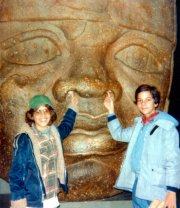 All of which makes him out to be rather a saint, which may indeed be appropriate but is also rather depersonalizing. When I knew him he was just an uncommonly fun friend, part of my inner circle. We hung out, played games, hatched schemes, acted silly.
All of which makes him out to be rather a saint, which may indeed be appropriate but is also rather depersonalizing. When I knew him he was just an uncommonly fun friend, part of my inner circle. We hung out, played games, hatched schemes, acted silly.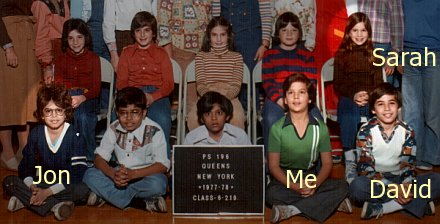
 Thus began the Night of a Million Bees. Actually it was only thirty or forty, but to me it seemed like a million. You see, even though as a scientist I like and admire bees, and can even enjoy watching their industrious activities from a safe remove, in person I’m terrified of them. My parents used to make fun of the way I skedaddled out of the way whenever I saw one as a kid; they called it “The Glickstein Shuffle.” In summer camp I was always relegated to right field when we played softball, where the clover was dense and the honeybees were busy. Many were the times when a fly ball would land just a few steps from me while I was preoccupied with staying out of the bees’ way.
Thus began the Night of a Million Bees. Actually it was only thirty or forty, but to me it seemed like a million. You see, even though as a scientist I like and admire bees, and can even enjoy watching their industrious activities from a safe remove, in person I’m terrified of them. My parents used to make fun of the way I skedaddled out of the way whenever I saw one as a kid; they called it “The Glickstein Shuffle.” In summer camp I was always relegated to right field when we played softball, where the clover was dense and the honeybees were busy. Many were the times when a fly ball would land just a few steps from me while I was preoccupied with staying out of the bees’ way.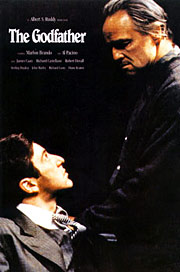 Let’s get this out of the way right now: The Godfather was a supernaturally good movie. The story, the characters, the performances, the settings, the cinematography, the editing, the music
Let’s get this out of the way right now: The Godfather was a supernaturally good movie. The story, the characters, the performances, the settings, the cinematography, the editing, the music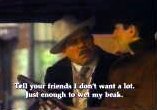 Part II? Lots of that was great, too. Numerous memorable moments. “I know it was you, Fredo. You broke my heart. You broke my heart!” De Niro as the young Vito — incredible. But does it add up to much more than the sum of its parts like the original? No. Most of its flaws are with the plot, which is at times confusing and inconsistent. For instance, I have never been able to find anyone able to answer these questions (warning: spoilers follow):
Part II? Lots of that was great, too. Numerous memorable moments. “I know it was you, Fredo. You broke my heart. You broke my heart!” De Niro as the young Vito — incredible. But does it add up to much more than the sum of its parts like the original? No. Most of its flaws are with the plot, which is at times confusing and inconsistent. For instance, I have never been able to find anyone able to answer these questions (warning: spoilers follow):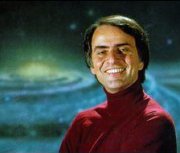 Sagan’s famous Tonight Show appearances happened right around the time I was old enough to stay up and see them. Early on I remember being annoyed by his criticisms of Star Wars (to wit: that spaceships don’t make whooshing noises in space, that Chewbacca deserved a medal at the end too, etc). But then my mom, who I think had a bit of a crush on him, urged me to read
Sagan’s famous Tonight Show appearances happened right around the time I was old enough to stay up and see them. Early on I remember being annoyed by his criticisms of Star Wars (to wit: that spaceships don’t make whooshing noises in space, that Chewbacca deserved a medal at the end too, etc). But then my mom, who I think had a bit of a crush on him, urged me to read 